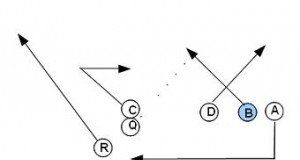There is a variety of ways to employ good defense in flag football, especially in a 5-on-5 setting.
Today, we’ll be discussing 5 of those schemes. They’re excellent for both veterans and beginners who are seeking to defend against a wide range of offense plays that they’ll come across.
However, for those defense strategies to be successful, proper communication between your team members is needed.
Also Read: Flag Football Positions
So be sure to accurately relay the strategies to your team, while explaining how to implement them each game!
To get started…
2-2 Box Zone
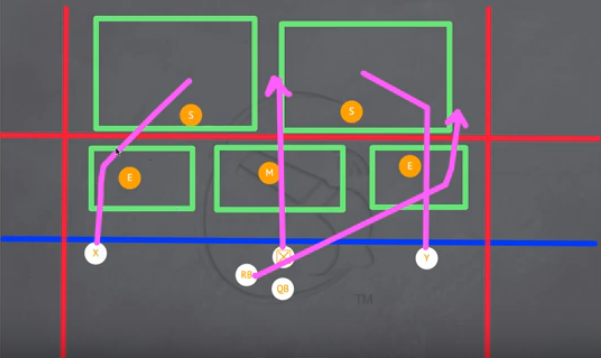
In flag football the box zone (or 2-2) is considered a stable go-to strategy.
This defense can be run against a bunch formation or a spread, both with similar levels of effectiveness.
The execution of it is quite simple, and it isn’t athletically demanding, making it easy to learn and master by your team members. As a result, it also works for a variety of teams.
Box(2-2) – )How it Works
This is a basic scheme, with 2 linebackers/corner flowing to short zones, and 2 safeties playing towards deep zones.
This defense can be weak mid-field, and so it can be exploited if the offense team knows what formation you’re trying to run.
However, there are upgrades you can apply to this strategy. You can start out with a 5-across formation, placing your defenders at recommended distance from rushers. Then, you can have everyone move to their zones at the ball’s snap.
Also Read: Flag Football Terms
Doing so, you can switch quickly between defensive schemes while confusing the offense. Also, this setup helps you send a rusher to a variety of positions. Also, you can effectively rotate which players move to short or deep zones.
All you have to do is remove the easy and quick reads of the opposing quarterback, then have them read defense mid-play instead. This’ll cause them to make mistakes on a more frequent basis, and as a result your defense will be much better.
Obviously, for this strategy to be successful, all players on the team have to be on the same page, which is key.
(3-1)
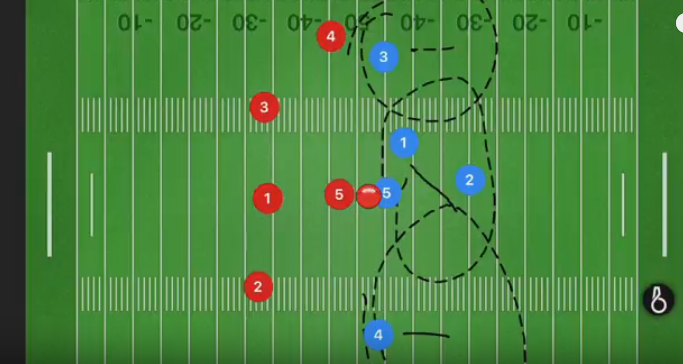
This strategy is a favorite for many coaches. It’s a good method of defending most offense that you come up against. However, this scheme fails against spread teams.
Regardless, in leagues where throwbacks and handoffs are legal, this strategy works well. It’s a versatile defense and can effectively combat the opposing team.
Though do note, some practice and the proper communication are required to execute this defense effectively. Though it is powerful if performed correctly.
(3-1) – How it Works
It starts with outside defenders playing 5 yards away from the scrimmage line, and out of the end receivers. If they’re on the receiving end of a hand-off, then they can deal with it quick. Otherwise, they’re seeking a drag to their side for a job, or quick shoots.
If the previous doesn’t happen, then the team can quickly bail to take away corners, outs, and backside posts through a 3 deep look. From there, middle safeties can rotate freely throughout the play, helping over flood tops in both directions.
Pros
3-1 defenses can help disguise weaker plays mid-linebacker positions, since it burdens them the least.
Most of the athleticism required will be on the part of those in the safeties and corner, while the middle linebacker is simply protecting the mid-field.
Also, this is a defense you can execute in situations where there are long distances, such as 3rd and 4ths, and longs.
Also Read: Basic Skills – Flag Football Drills for Kids
There, corner is straight towards deep thirds, and linebackers can assist in killing throwbacks or bailing to a line, with middle safety roaming throughout the top to protect from deep shots.
(4 Across)
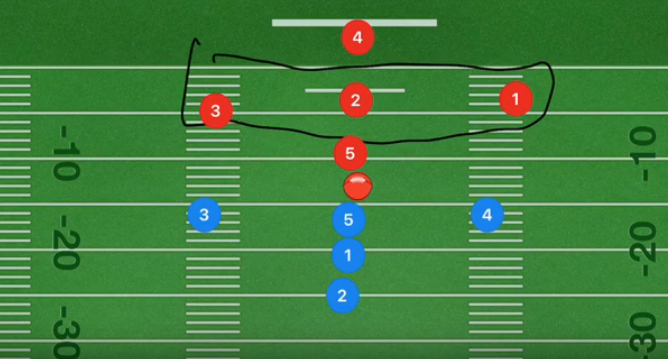
The 4 across strategy (also called quarter’s zone) is a well-known strategy. It’s a staple goal defense line used by many teams, thus covering 5 to 10 yards deep. It also helps in passing off drags, slants, while crossing routes towards other team players.
This strategy isn’t recommended in open fields, without the backing of a defending end-zone.
It’s a strategy that normally kills time and is only a preventative defense measure that disallows other players from reach behind you. Also, there’s susceptibility to offensive players who prefer flooding zones with many route layers.
As a result, this strategy only works well when outside defenders are close to their formation, with readiness to roll over chasing comebacks or backside digs.
(MAN LOCKs)
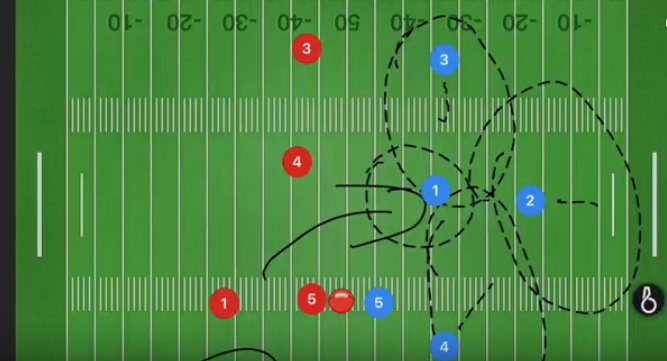
This is one of the easiest schemes to coordinate. It’s especially fruitful when introduced to newer players that struggle with their zone positions, specifically when their athletic level doesn’t match the rest of the team overall.
This is mostly functional against spread offenses. Also, if used correctly, it’s effective against teams that run too much, without relying on cross or flag football routes as necessary.
When running this type of scheme, it’s important not to get beat deep. The best option is to give up short curls, drags, and comebacks if effectively pulling flags isn’t possible.
You have to try and make the offense earn every yard they run though, which is much better than letting a few touchdowns go through as a result of more aggressive players.
If a player is backed up to their goal lines, we recommend using zone defense first, even though crossing a route is often used instead. With zone defense, a quarterback has smaller windows when playing into zone flag football defense hands.
(2-1-2 Blitz)
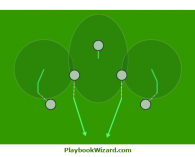
This is one of the riskiest flag football moves a team can execute, but it comes with a high reward. It isn’t effective against spread offenses though, but only against full bunch ones.
Also, sending tall rushers into is the best bet, who are more likely to get into a quarterback’s face and stop them.
The focus is on intimidation. By having 2 rushers charge at a quarterback, the offense’s quarterback is forced to quickly make a throw decision since they know it’s necessary to exit quickly.
From there, it’s the job of the two defenders to read the quarterback, with take away and fast deep throws, while a middle line backs might be seeking to intercept any quick through, especially since they’re coming out of the formation.
From there, the rushers have to focus on taking away the flattened passing lanes. Regardless of the direction the quarterback throws, rushers will simply sell out through jumping with their hands in the air for a knockdown.
The backside rusher will run instead for the flag and will arrive there is a quarterback attempts to pump fake then run.
This scheme is fun if done properly, yet it comes as a high-risk and high-reward tactic.




